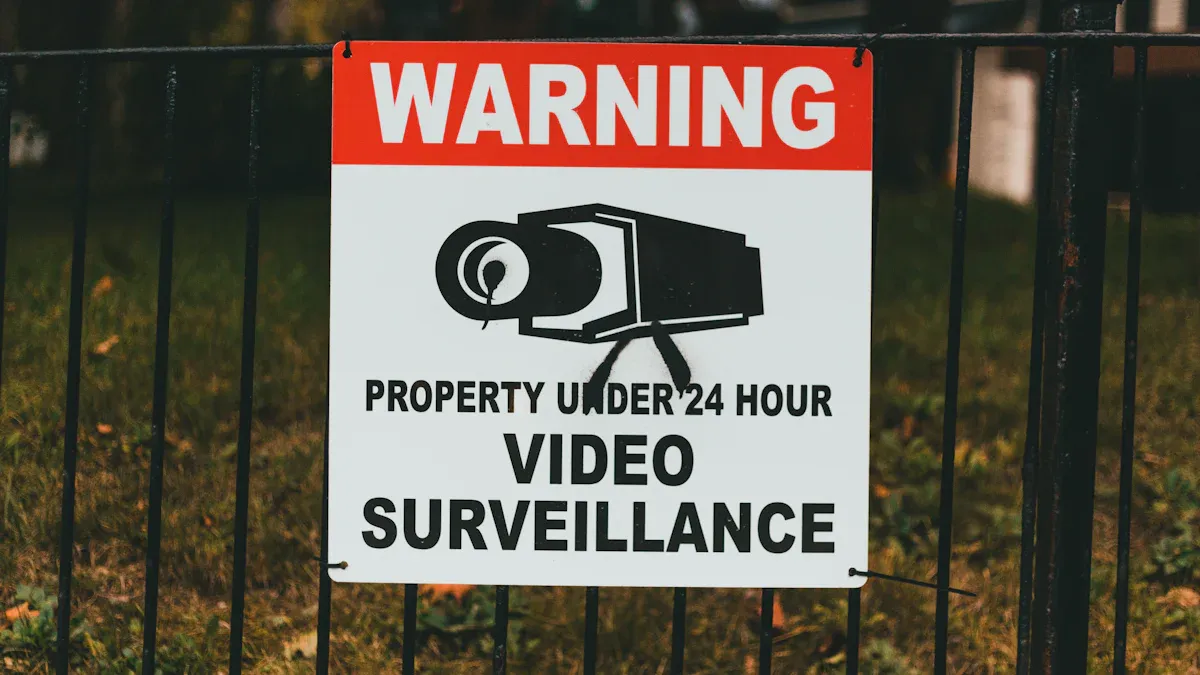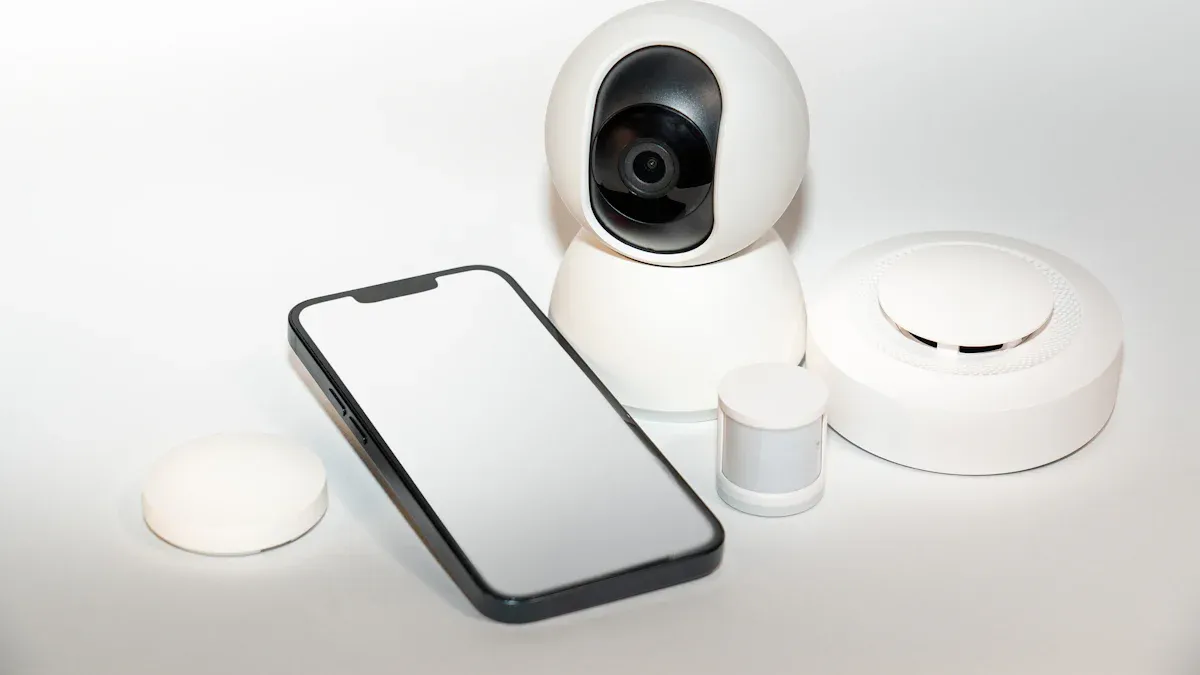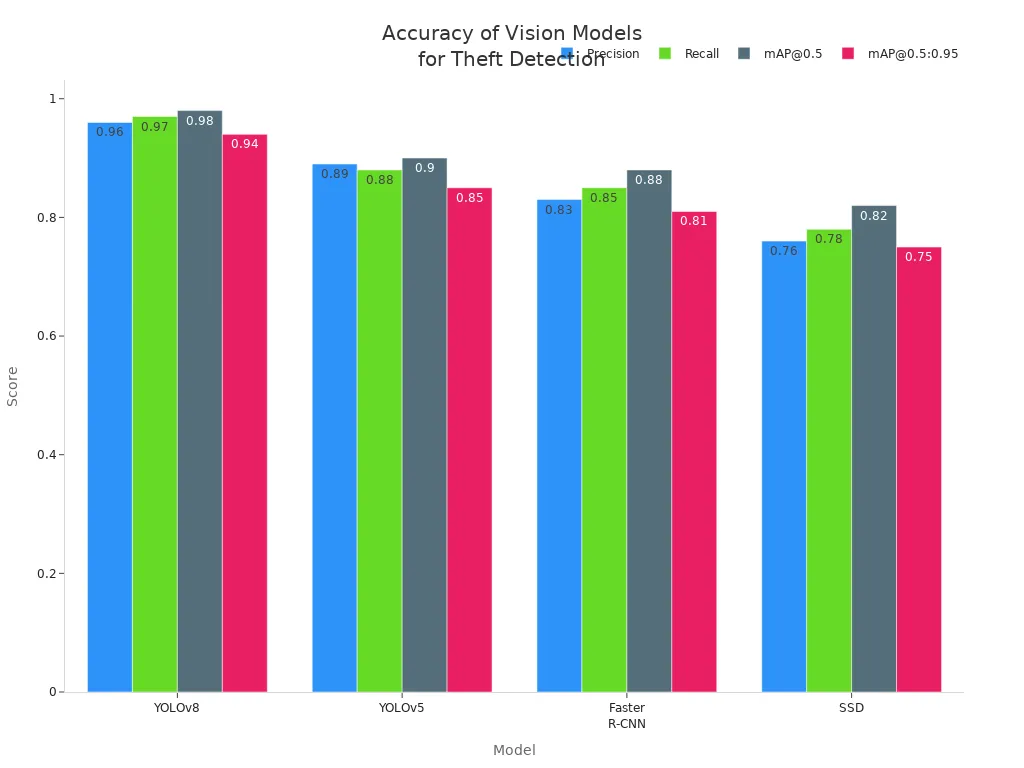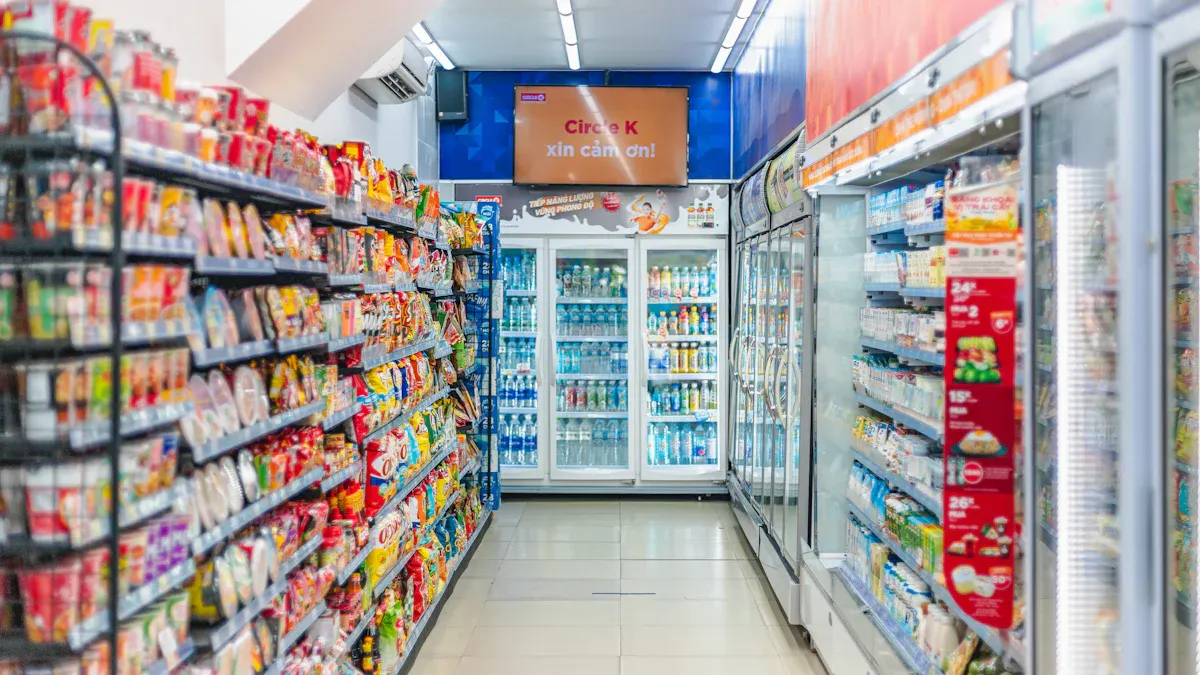How AI Security Protocols Prevent Theft in Unmanned Stores

AI security protocols change how you keep unmanned stores safe. You have special problems when no workers are inside. AI video surveillance uses clear cameras and smart software to find threats fast. You can see up to 90% less theft because AI finds loitering and hiding early. These protocols keep stores safe without people there. You get better accuracy and speed as AI watches and acts right away.
Key Takeaways
AI security protocols help stop theft in unmanned stores by spotting strange actions right away. - Automated access and payment systems make shopping faster. Customers can go in and pay without waiting in line. - Multilayered security frameworks use AI, IoT sensors, and blockchain to protect stores from theft. - Advanced technologies like computer vision and machine learning help find threats better. This means there are fewer false alarms. - Privacy measures keep customer data safe. Shoppers can feel secure when they use unmanned retail services.
AI Security Protocols in Unmanned Retail Stores
Real-Time Threat Detection
Unmanned retail stores need strong protection because no staff are there. AI security protocols use cameras and iot sensors to watch the store. These systems work all day and night. You get alerts right away if something strange happens, like loitering or odd movement.
Cameras and iot sensors watch every part of the store.
AI looks for shoplifting by spotting suspicious actions, like hiding items or skipping payment.
Automated voice warnings can scare off intruders before they steal.
You get instant notifications on your phone if a threat is found.
The system can call law enforcement for quick help.
AI-driven object detection helps spot weapons or risky behavior early. The system learns from past events, so it gets better at telling normal shopping from real threats. This keeps your store safe and reduces false alarms, making security more reliable.
Here is how real-time threat detection works in unmanned retail stores:
Evidence Description | Purpose in Threat Detection |
|---|---|
Facial recognition technology with watchlist databases | Helps you find known offenders and stop them early. |
Real-time monitoring of transactions through POS system connectivity | Flags unpaid items, helping you catch theft. |
Analysis of movement patterns focusing on loitering and erratic behavior | Spots suspicious actions fast, so you can act quickly. |
Advanced algorithms learning from historical data | Learns new shoplifting tricks, making detection smarter over time. |
Monitoring multiple camera feeds simultaneously | Gives you a full view of the store, so nothing is missed. |
You can trust ai security protocols to keep your unmanned store safe and help prevent loss.
Automated Access and Payment Control
In ai unmanned retail stores, you enter and shop without waiting in line. Automated access and payment control systems make this easy. You might use a mobile app, scan a QR code, or use facial recognition to get inside. Smart shelves and iot sensors track what you pick up or put back.
Automated checkout lets you skip the register.
Smart shelves know when you take or return items.
RFID tags help track and monitor products.
Data analytics keep popular items in stock.
Customer interfaces guide you if you need help.
You pay with digital methods, like a mobile app or smart card. The system charges you as you leave, so you do not need to scan or swipe at a register. This makes shopping quick and easy.
Automated systems also help stop theft. Machine learning algorithms watch for actions like putting items in your bag without paying. The system can spot unusual behavior, like someone lingering too long or acting suspiciously. Multi-layered payment checks, like biometric scans or one-time passwords, make sure only you can pay for your items.
Tip: Automated access and payment control systems work better than old security cameras and alarms. They do not just watch—they act fast to stop theft and protect your store.
Multilayered Security Frameworks
Unmanned retail stores need more than one layer of protection. Multilayered security frameworks use ai, iot sensors, cryptography, and blockchain to keep your store safe. These systems work together to protect your store from every angle.
Component | Description |
|---|---|
Personalized Security Measures | AI-driven iot sensors change security based on what is happening in the store. |
Increased Use of Mobile Notifications | You get real-time alerts on your phone, so you can act fast. |
Enhanced Customer Experience | Smart sensors reduce false alarms, so real shoppers are not bothered. |
Collaboration with Law Enforcement | The system can share data with police for quick action. |
Predictive Analytics | AI studies shoplifting trends and helps you stop theft before it happens. |
Behavioral Analysis | The system watches how people move to spot suspicious actions. |
Inventory Optimization | Iot sensors help you manage stock and reduce theft-related losses. |
Performance Tracking | The system checks itself to find weak spots and improve security. |
Cryptographic and blockchain measures add even more protection. Decentralized identity management keeps your personal data safe from hackers. Data stored on the blockchain cannot be changed without you knowing, so you can trust your records. Smart contracts automate payments and make sure every transaction is safe and clear. You control what data you share, and every step is tracked for full accountability.
With these multilayered frameworks, ai unmanned retail stores use cameras, iot sensors, digital payment systems, and advanced protocols to create a strong shield against theft and fraud. You get peace of mind, knowing your store and customers are protected by the latest retail security technology.
Core Technologies Powering AI Unmanned Retail Stores

Computer Vision and Video Surveillance
Computer vision and video surveillance are very important in ai unmanned retail stores. These systems use clear cameras and smart software to watch the whole store. Computer vision can see if someone hides an item or does not pay. It also reads barcodes and keeps track of products, even if they move or are stacked.
Technology Type | Description |
|---|---|
Computer Vision and Barcode Recognition | Lets the system see products in the cart and helps checkout by taking pictures of barcodes. |
Object and Barcode Recognition Combined | Uses both what it sees and barcode data to track products, even if they are moved or stacked. |
Surveillance Systems | Clear cameras watch customers all the time, helping track what they do and stopping theft. |
AI finds suspicious actions and sends alerts if it thinks someone might steal, making the store safer. |
AI cameras give you quick information about how people shop. This helps you decide where to put things and how to set up your store. AI can spot strange things and send alerts right away, so you can stop theft before it happens.

IoT Sensors and Data Analytics
IoT sensors are a big part of unmanned retail stores. These sensors watch every item you pick up or put back. Cameras and sensors work together to see what you do and update the inventory right away. RFID tags help keep track of stock and let you know if something is missing.
Sensors and cameras watch how products move and what customers do.
Data is checked right away to stop theft and keep shelves full.
AI looks at shopping habits and helps change prices or stock.
Analytic tools help you see odd behavior fast. This means you can stop theft before it gets worse. When you use ai and iot together, you make a smart system that keeps your store safe and running well.
Blockchain and Cryptography Integration
Blockchain and cryptography help keep your data safe in ai unmanned retail stores. Blockchain keeps records safe and makes sure no one can change them. Cryptography lets only you and trusted systems see private information. Smart contracts make payments easy and safe. Decentralized identity management keeps your personal details private, even when there are no workers.
Agentic AI and Proactive Security
Agentic ai makes security even better in unmanned retail stores. This technology can find fraud at checkout, watch for odd movements, and guess when theft might happen. It also checks what workers do to stop inside threats. You get reports and alerts automatically, so you always know what is happening in your store.
Application | Description |
|---|---|
Uses smart pattern finding to spot problems fast and warn you about possible fraud. | |
Autonomous Video Surveillance Analysis | Finds odd movements and signs of theft, then tells security staff with alerts. |
Predictive Theft Risk Assessment | Looks at old data to guess when theft might happen, so you can add staff when needed. |
Insider Threat Monitoring | Checks worker schedules and logs to find signs of inside fraud. |
Integrated Incident Management | Makes reporting easy and helps solve problems quickly when something strange happens. |
Note: When you use ai, iot sensors, blockchain, and agentic ai together, you build a strong shield against theft. These tools work as a team to give you quick monitoring, fast alerts, and safe payments in ai unmanned retail stores.
Security Scenarios in Unmanned Retail Stores

Detecting Suspicious Behavior
Unmanned retail stores have special problems. Shoplifting can happen at any time. 4K cameras and 360° views help you see every spot. AI tools watch for shoplifting fast. These tools look for people hiding things or not paying.
AI uses different ways to find suspicious behavior:
Description | |
|---|---|
Computer Vision | Smart cameras watch customers and find items not scanned. |
Machine Learning | Looks at shopping habits to spot odd actions that might be fraud. |
Data Analytics | Uses lots of data to guess and watch for strange actions. |
Pattern Recognition | Tells normal actions from suspicious ones by checking past sales. |
Anomaly Detection | Finds things that do not fit the usual pattern with machine learning. |
Machine learning helps cut down on false alarms by 60%. This means you do not waste time on fake threats. AI checks transactions so you can focus on real shoplifting. This makes it easier to stop loss.
Preventing Unauthorized Entry
Unmanned stores need strong security to keep out unwanted people. You can use facial recognition, smart locks, and quick alerts to control entry. Some stores, like JD.ID X-mart and Biu, use QR codes or facial recognition to let you in and pay. Inokyo asks you to scan a QR code before you go inside.
Method | Description |
|---|---|
Facial Recognition | Lets people in fast and safe, tracks shoppers, and charges them when they leave. |
Smart Locks | Stops people from going into certain places, so only the right people get in. |
Real-Time Alerts | Tells security right away if someone sneaks in, so they can act fast. |
These tools help keep your store safe and protect customer data with strong codes. Cybersecurity is very important because you have private information.
Automated Incident Response
If someone tries to steal, you need to act fast. AI unmanned stores use automatic systems to warn you right away. Smart shelves with iot sensors tell you if someone tries to take something. The system sends alerts to your phone or security team.
AI theft detection finds problems and sends warnings right away.
Automatic systems help you act fast, so you lose less and keep your store safe.
Good security makes customers trust your store.
Tip: Using smart cameras and automatic alerts helps you stop shoplifting and protect your unmanned store from loss.
Reliability, Privacy, and Future of AI Security
Accuracy and False Positives
You want ai security protocols to work well in unmanned stores. Old security systems often send too many wrong alerts. This can make you miss real problems. Ai gives you smarter alerts. These systems learn to tell people and animals apart. You do not get warnings for things that are not threats. You see fewer false alarms and more real alerts. This helps you act fast when shoplifting or theft happens.
ai security protocols learn from past events to find real threats.
You only get alerts when there is a real risk, not for safe actions.
Advanced ai checks live video from many cameras at the same time.
You keep your unmanned store safe and stop loss better.
Customer Privacy Protection
You care about privacy and safety when you shop in unmanned stores. These stores use special systems to keep your personal data safe. Some stores do not use facial recognition or biometric data. This means you stay anonymous. Many stores follow strict rules like GDPR to protect your information.
Privacy Measure | Description |
|---|---|
Anonymous Tracking Systems | Systems that do not use facial recognition or biometric data. |
GDPR Compliance | Designed to comply with major data protection regulations like GDPR. |
You can trust your privacy is safe while you shop and pay. These steps help you feel safe in unmanned retail stores.
Advancements in AI Security
You see new changes in ai security every year. Unmanned stores now use smarter video surveillance and better data analytics. You get faster alerts and stronger ways to stop loss. Blockchain helps keep payments safe and makes sure your records cannot be changed. Agentic ai can guess shoplifting before it happens. These tools work together to give you strong security and protect your privacy.
Tip: You will see even more security and privacy improvements as ai gets smarter. Unmanned stores will become safer and more trusted for owners and shoppers.
You can count on ai to help stop shoplifting in unmanned stores. These systems use smart tools to catch theft and protect your store. Shoppers get better privacy and security. Stores now use strong shoplifting detection and good security controls. In the future, you will see:
Zero Trust Architecture for better protection
Smarter shoplifting prevention with ai
Improved loss prevention systems
You should think about these solutions to keep your unmanned stores safe and ready for what comes next.
FAQ
How does AI detect theft in unmanned stores?
AI uses cameras and sensors to watch for bad actions. It looks for people hiding things or not paying. You get alerts if the system sees something strange.
Is my personal data safe in an unmanned store?
You can trust your data is safe. Stores use encryption and follow privacy rules. Many systems do not use facial recognition, so your identity stays hidden.
What happens if the AI makes a mistake?
AI learns from past events to make fewer mistakes. If it does make a mistake, you get an alert fast. You can check the video and fix the problem quickly.
Tip: Always check your store’s alert settings so you get important messages.
Which technologies work together to prevent theft?
Technology | Role in Security |
|---|---|
Computer Vision | Watches for theft actions |
IoT Sensors | Tracks product movement |
Blockchain | Secures payment records |
Agentic AI | Predicts and stops threats |
See Also
The Future of Retail: Embracing AI-Driven Stores
Understanding the Growth of AI-Enhanced Corner Shops
Starting an AI-Driven Corner Store on a Budget
